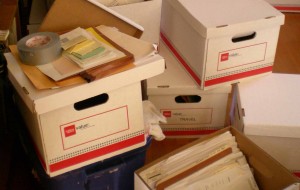According to a recent survey from the National Association of Insurance Commissioners (NAIC), more than half of Americans don’t have a home inventory of their possessions, putting them at risk for inadequate home insurance coverage.
- Survey results show 59 percent of consumers have not made a list or inventory of their possessions. Of those individuals with a home inventory, 48 percent do not have receipts; 27 percent do not have photos of their property; and 28 percent do not have a back-up copy of the inventory outside the home.
- 59 percent of people with inventories have not updated their inventories in more than a year, meaning new purchases and gifts may not be covered.*
In the event of a burglary, fire, or other disaster, a home inventory can help account for stolen and damaged items. It makes the renter’s and homeowner’s insurance claims process easier, faster, and helps ensure that you receive a fair settlement from your insurance company. At tax time, a home inventory provides documentation to support tax-deductible property losses.
How to create a home inventory in 5 easy steps:
1. Contact Your Renter’s or Homeowner’s Insurance Company
Call and ask what information they require to file a claim, and for specific reimbursement requirements. Tell them you are getting organized with your home inventory list and that you want to be prepared. Ask for written information or online links to their website regarding their claim process. Don’t be afraid to ask about “what if” scenarios.
2. Choose the Documentation Method
Print a free home inventory worksheet by Real Simple to get started. Or create your own using GOOGLE DOCS to make your digital updates and printouts fast and easy. Include photos whenever possible.
- The more information you gather now, the less you will have to search for later.
- Make several copies (digital AND hardcopy) and keep them in different locations. For example: store one hardcopy at a friend or neighbor’s house, one at work, and send one to an out of town relative. If using Google Docs, updates you make will automatically be reflected in links made available to friends or relatives.
- If you create a a digital inventory in WORD or EXCEL, be sure to put copies of the file in multiple places, such as on thumb drives in different locations, in a safe deposit box, and in cloud storage. For easy cloud storage, send an email to yourself and your trusted loved ones with the home inventory list and low-resolution photos as an attachment.
- Know Your Stuff is a free digital home inventory service provided by the Insurance Information Institute. Know Your Stuff walks you through each step of the home inventory process and stores your inventory online. They also have an app, where you can modify your home inventory and add photos. If you want to trust a company with keeping your home inventory, it is a great resource.
3. Create Your Home Inventory List
As you create an inventory, move through the home room by room. Include the garage, attic, basement, and additional storage rooms and closets. When in doubt whether or not something you own should be part of your home inventory, include it. Make sure to include both common and collectors items, such as:
- Appliances (small and large)
- Artwork (everyday and collections)
- Bedding
- Clothing, Shoes, Purses, and Accessories (that $500 pair of Jimmy Choo shoes?)
- Collector’s Items (misc.)
- Dishes (everyday, occasional, crystal, etc.)
- Electronics (desktop computer, laptops, iPads, iPods, cell phones, stereo equipment, televisions, etc.)
- Furniture (sofa, tables, chairs, beds, dressers, etc.)
- Jewelry (costume and high value items)
- Media (books, digital and analog music, family movies, etc.)
- Stamp and Coin Collections
- Sports Equipment (bikes, ski’s, snowboard, hockey gear, etc.)
- Tools and hardware (in the home, garage, workshop, art studio, etc.)
4. Add Details
The more details included in your home inventory, the smoother the claims process should go. Start gathering and collecting receipts for high dollar items so that the claims department will have little argument as to when an item was purchased and for how much. Keep original receipts and appraisals (including hard and digital copies) with your inventory lists.
Along with a general description, take photos and/or video, especially of the high value items. Note the date of purchase, serial number, make and model number, and unique identifying features. Details can help your items be recovered if stolen, and replaced if damaged beyond repair. For example: my beloved silver and turquoise bracelet I got from New Mexico has 10 small oval turquoise stones and a small engraving of an eagle with wings.
Once you’ve completed the home inventory, share it with your insurance agent, who can advise whether your coverage is adequate, and make adjustments as necessary.
5. Maintain Your Home Inventory
Maintain your inventory list when you add or take away items from your home to ensure everything stays up to date. Make notes on your written hardcopy, or type changes on your main digital copy. Date your changes. Then make it an annual task, such as during Spring-cleaning, to perform updates to all copies in all locations.
Not a perfect record keeper? If you forget to keep things updated during the year, simply walk through your home with the list and add to or cross out things on your inventory. Practice makes improvement when it comes to maintaining your home inventory.
* Source: rmiia.org
Ready for more? Call (510) 229-7321 today to schedule a complimentary assessment to get your home inventory in order. Gift certificates are available.
